Fire code vs. walkable streets: Fire officials say that urban planning measures meant to enhance pedestrian survival and livability cost lives
Walkable streets have gained traction as a must-have feature of healthier, safer urban environments. But pedestrians, city planners, and other advocates of walkable street design sometimes meet resistance from fire and medical officials, who depend on wider, faster streets to keep emergency situations from getting out of hand.
In this article, we explain the rising popularity of walkable streets in today’s urban planning, looking at how urban design and firefighting are evolving to meet the challenges of fire safety, medical rescue, and pedestrian safety.
Centuries of change remake America’s dense, pedestrian-centered cities
The earliest American cities were “walking cities.” These compact cities and towns placed homes and businesses in close proximity, with large central squares that served as markets and meeting places. Narrow, meandering streets ran throughout, allowing residents to move between places of work and leisure by foot or horseback.
Gradually, these patterns of land use and travel gave way to cities designed around electric streetcars. By the 1880s, urban design evolved to accommodate these streetcars, which connected city centers to the surrounding districts. Working-class people lived near their workplaces—concentrated largely in or around business districts—while middle- and upper-class Americans took advantage of more efficient means of travel to escape to the suburbs.
After World War II, architects and a booming automobile industry remade American cities. Many urban architects embraced the vision of Le Corbusier, a Swiss-French architect who called for slums to be torn down and replaced with a mix of parks and high-rise buildings. Cars became a focal point of urban design, leading to the emergence of wide, fast streets and the infrastructure needed to support sprawling suburban communities. In 1960, parking space, roads, and sidewalks made up nearly 60 percent of the ground area in Los Angeles’ central business district. Streets and parking occupied anywhere between 39 and 50 percent of the available space in major cities like Chicago, Dallas, and Minneapolis.
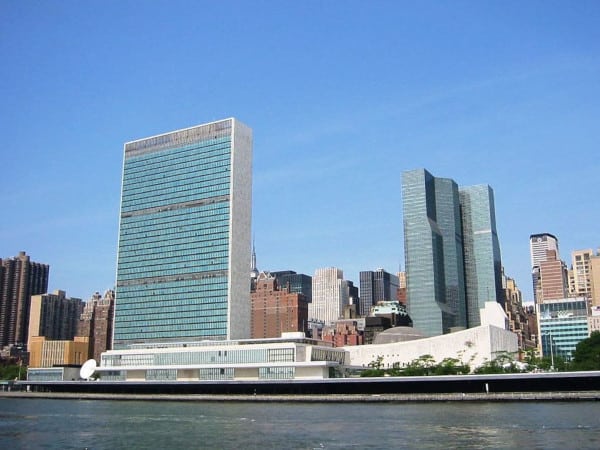
A push to revive the walking city meets with resistance from local fire officials
By the 1960s, this car-centric approach to American urban design came under fire. In The Death and Life of Great American Cities, writer Jane Jacobs famously made the case for cities with mixed-use neighborhoods, small blocks, and slower roads that made pedestrians and social life central features of urban landscapes.
Over the decades that followed, economists, health and safety officials, and city planners elaborated on her vision. A variety of movements emerged, including New Urbanism, which provided a set of principles by which cities could promote walking, discourage driving, and create vibrant communities with diverse settings. New Urbanist strategies have been tried in cities like Seaside, Florida, a community recognized for its walkable footpaths and innovative infrastructure.
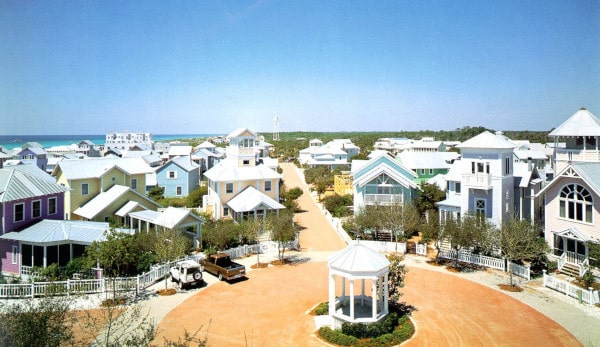
But a number of pedestrian-friendly proposals—particularly, those that narrow roads or slow traffic—have rubbed fire officials the wrong way.
In San Francisco, California, Supervisor Scott Wiener announced a plan to make the city’s streets more pedestrian-friendly. The 2014 scheme, which limited the width of streets in new construction, met with public resistance from fire chief Joanne Hayes-White, who said that narrower streets create a public safety hazard. Hayes-White argued that the proposed 20-foot-wide roads compromised firefighters’ ability to get trucks down streets, turn corners, and squeeze past wider vehicles using aerial ladders.
With the introduction of more compact fire trucks, San Francisco’s conflict later resolved in a compromise. But it’s far from the only city to wrestle with the issue. From delayed bike lanes in Baltimore to proposed ordinances restricting streetside parking in Berkeley, California, fire officials find themselves cautioning against (or vigorously opposing) core features of walkable street design.
Walkable streets may not provide sufficient room for standard firefighting equipment
At the center of first responders’ reservations are facts like these: brain damage can begin as early as three minutes after a cardiac arrest. By nine minutes, irreversible brain damage is likely, and after ten, the chances of survival drop significantly. For firefighters, a small flame can turn into a large fire in less than 30 seconds. And flashover—a deadly scenario in which flammable vapors can cause room temperatures to exceed 1,000 degrees Fahrenheit—happens far faster in newer homes than older ones, contributing to death and injury rates among firefighters and fire victims alike. As the video below illustrates, furnishings in modern homes contribute to the fast growth of today’s residential fires:
But when large fire trucks meet narrower streets, minutes can slip away quickly. Residents of the Bronx borough of New York City expressed concern after a video emerged of an aerial ladder truck struggling to squeeze through parked cars on a $40 million road project. In Homewood, Alabama, firefighters complained that cars parked along narrow streets have blocked the advance of fire trucks, adding five or even ten minutes to arrival times.
It’s because of scenarios like these that first responders often favor cities designed with short blocks, wide streets, few traffic calming measures, and few features in the center of streets. And the concerns go beyond response times—firefighters also need space to operate their equipment at a safe distance from a building’s collapse zone. Where neighborhoods include tall buildings, firefighters may require additional room for aerial ladder trucks. And cities like Austin, Texas dispatch these large vehicles, which can require nearly 18 feet in street width with their jacks extended, to even smaller structure fires.
Narrower streets and traffic-calming measures can sap precious seconds from a timely arrival
Many traffic-calming measures do slow emergency responses—but not all approaches to walkable street design incur the same cost.
According to estimates published by the Local Government Commission, three traffic-calming measures can sometimes make traffic safer while improving response times: roundabouts, curb extensions, and curb radius reductions.
Roundabouts can significantly reduce queue lengths and wait times at intersections by facilitating the free flow of traffic. Curb extensions, which bulge into intersections, and curb radius reductions, which extend into arterial streets, slow drivers by forcing vehicles into tighter turns. Both can keep parked cars away from corner entries, making it easier for large trucks to get by.
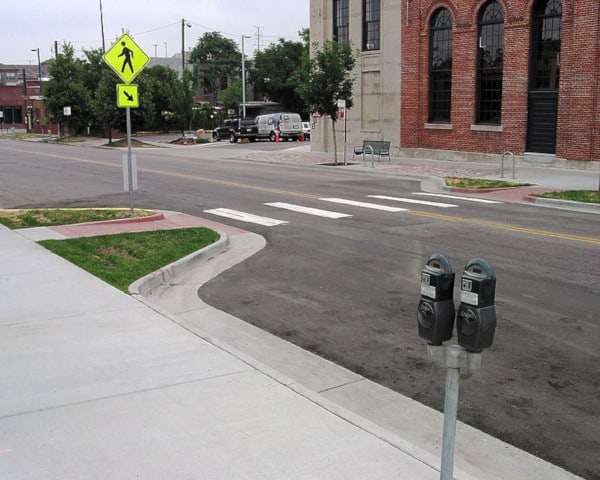
Other measures reduce the speeds of emergency vehicles only modestly. Speed pillows, an alternative to traditional speed bumps, force motorists to straddle a raised section of stone or pavement. While ambulances and other small emergency vehicles may need to slow slightly, full-sized fire trucks can pass over speed pillows without a noticeable loss in speed. Chicanes, a series of islands, encourage motorists to slow slightly—and can even save emergency vehicles three or four seconds when substituted for stop controls.
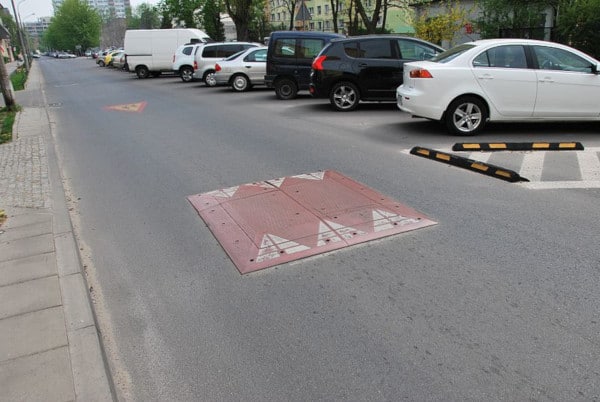
Some traffic-calming solutions have a steeper price. Speed bumps (or humps) may be the go-to solution for many looking to make neighborhoods safer, but they’re also costly for large fire trucks, causing delays between six and eleven seconds each. Stop signs add similar delays, particularly if they’re placed along primary routes of travel for emergency vehicles.
Even small delays impact response times, a measure of performance for first responders and firefighters
Delays of a few seconds may seem like a small price to pay for walkable streets—but for emergency responders, those seconds are in short supply.
Many jurisdictions strive to meet response time goals outlined by the National Fire Protection Association in NFPA 1710: Standard for Organization and Deployment of Fire Suppression Operations, Emergency Medical Operations and Special Operations to the Public by Career Fire Departments. For the first engine company arriving at a fire suppression incident, NFPA 1710 provides only 320 seconds from the time an alarm is received to the time of arrival. For medical responders with an automatic external defibrillator (AED), that time is only 300 seconds, or five minutes.
These response times may be one of the most widely-used measures of emergency responders’ job performance. Headlines like “Sacramento fire crews arrive nearly 2 minutes later than national standard” or “Richmond County response times fall short of standards” put fire departments in the hot seat, underscoring problems that range from severe funding shortages to mismanagement. These slow response times can motivate cities to seek new approaches to emergency services. And in other locations—such as Decatur, Alabama—local officials have considered imposing financial penalties on private companies that can’t get to victims quickly enough.
It’s no surprise that response times figure prominently in the minds of fire officials. But proponents of walkable streets note that too much attention to response times can place fire departments at odds with larger life-safety goals. Increasing vehicle speed and street width correspond to a rising rate of traffic fatalities and injuries. Traffic-related fatalities outnumber fire-related fatalities more than ten times over—and traffic-related injuries outnumber fire-related injuries nearly 170 times over.
Street width, a central point of contention, remains largely under the purview of fire code
2017 saw nearly 6,000 pedestrian deaths nationwide, rising from less than 4,500 in 2008. Data collected by Smart Growth America, a nonprofit organization for neighborhood development, suggest that most of these deaths occur along America’s widest roads. Even small reductions in lane width—from twelve feet to ten—promise to reduce the threat to pedestrians without increasing the rate of automobile collisions.
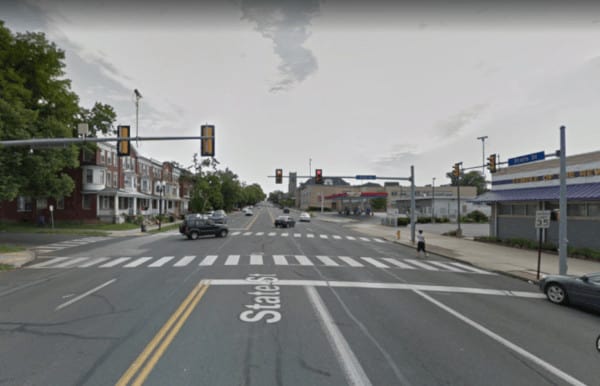
But those in favor of narrow, more walkable streets often find themselves faced with a problem: jurisdictions have adopted fire codes based in part or in whole on the International Fire Code (IFC), which requires at least 20 feet of unobstructed street width for emergency responders and requires traffic-calming measures to be approved by local fire code officials.
From the 2024 edition of the International Fire Code
503.2 Specifications.
Fire apparatus access roads shall be installed and arranged in accordance with Sections 503.2.1 through 503.2.8.
503.2.1 Dimensions.
Fire apparatus access roads shall have an unobstructed width of not less than 20 feet (6096 mm), exclusive of shoulders, except for approved security gates in accordance with Section 503.6, and an unobstructed vertical clearance of not less than 13 feet 6 inches (4115 mm).
503.2.2 Authority.
The fire code official shall have the authority to require or permit modifications to the required access widths where they are inadequate for fire or rescue operations or where necessary to meet the public safety objectives of the jurisdiction.
503.4.1.Traffic calming devices.
Traffic calming devices shall be prohibited unless approved by the fire code official.
Over the past 15 years, the IFC has moved gradually in the direction of flexibility for walkable street design. Some prior editions of the code didn’t include these exceptions for “the public safety objectives of the jurisdiction.” It was only after six years’ effort on the part of groups like the Congress for the New Urbanism that the IFC added the provision.
By rejecting parts of the IFC, working around it, or purchasing new trucks, cities move forward on walkable streets
Many advocates of walkable street design aren’t content to leave the final say in the hands of fire code officials—and the International Fire Code isn’t the only standard available to cities. In 2018, city officials in Baltimore, Maryland voted to remove a section of the International Fire Code from their fire code and embrace standards from the National Association of City Transportation Officials (NACTO), allowing for narrower street widths. Oregon and Washington, which don’t use the IFC, also permit cities to design streets with clearances less than 20 feet.
Still, some parking placement strategies can make cities more walkable without compromising on the 20-foot clearance required by the IFC. Inset parking extends sections of curbs at intervals, creating parking spaces while slowing traffic. Enlarging fire lanes can create more space around fire hydrants and more room for emergency vehicles. And by restricting parking to one side of the street, clearance can be maximized while making streets as narrow as possible.
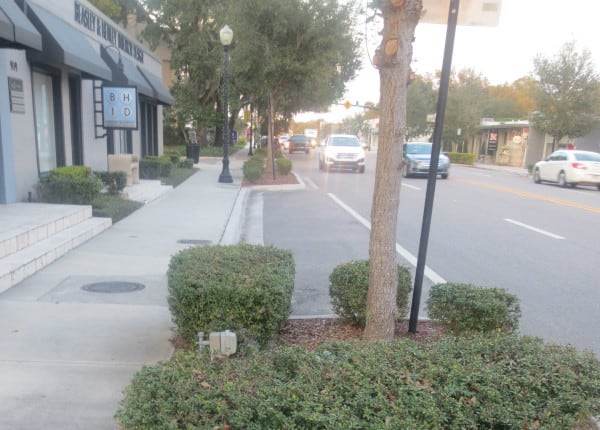
And when cities do choose to embrace narrower streets, new equipment—particularly, smaller fire trucks—can help fire departments navigate new environments. One leading example is the San Francisco Fire Department, which purchased smaller fire trucks after legislation narrowed streets in new construction. These smaller vehicles aren’t new to firefighting: fire trucks in Western Europe are often smaller, more maneuverable, and make better use of space than their American counterparts. And for now, San Francisco’s new trucks—which offer slightly smaller sizes, a reduced turning radius, and cameras placed to give firefighters a 360-degree view—appear to be doing the trick.
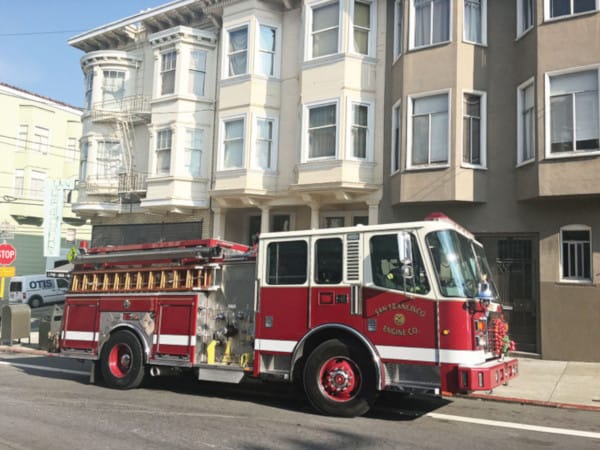
Fire safety will remain a priority in tomorrow’s safer yet walkable cities
Cities throughout the United States are experimenting with new ways to extinguish fires quickly while delivering on the benefits offered by walkable street design. Let QRFS keep you up to date on developments in the fire protection industry—like us on Facebook at Facebook.com/QuickResponseFireSupply or follow us on Twitter @QuickResponseFS.
Fire professionals looking to extinguish fires more quickly may want to read our recent article on how many American cities have recently retrofitted their fire hydrants with Storz hydrant converters, reducing the amount of time firefighters spend preparing to fight fires. You can also read about life safety rope that is UL-certified and NFPA-approved for use by firefighters.
Questions? Feedback? Call us at +1 (888) 361-6662 or email support@qrfs.com.
This blog was originally posted at blog.qrfs.com.


